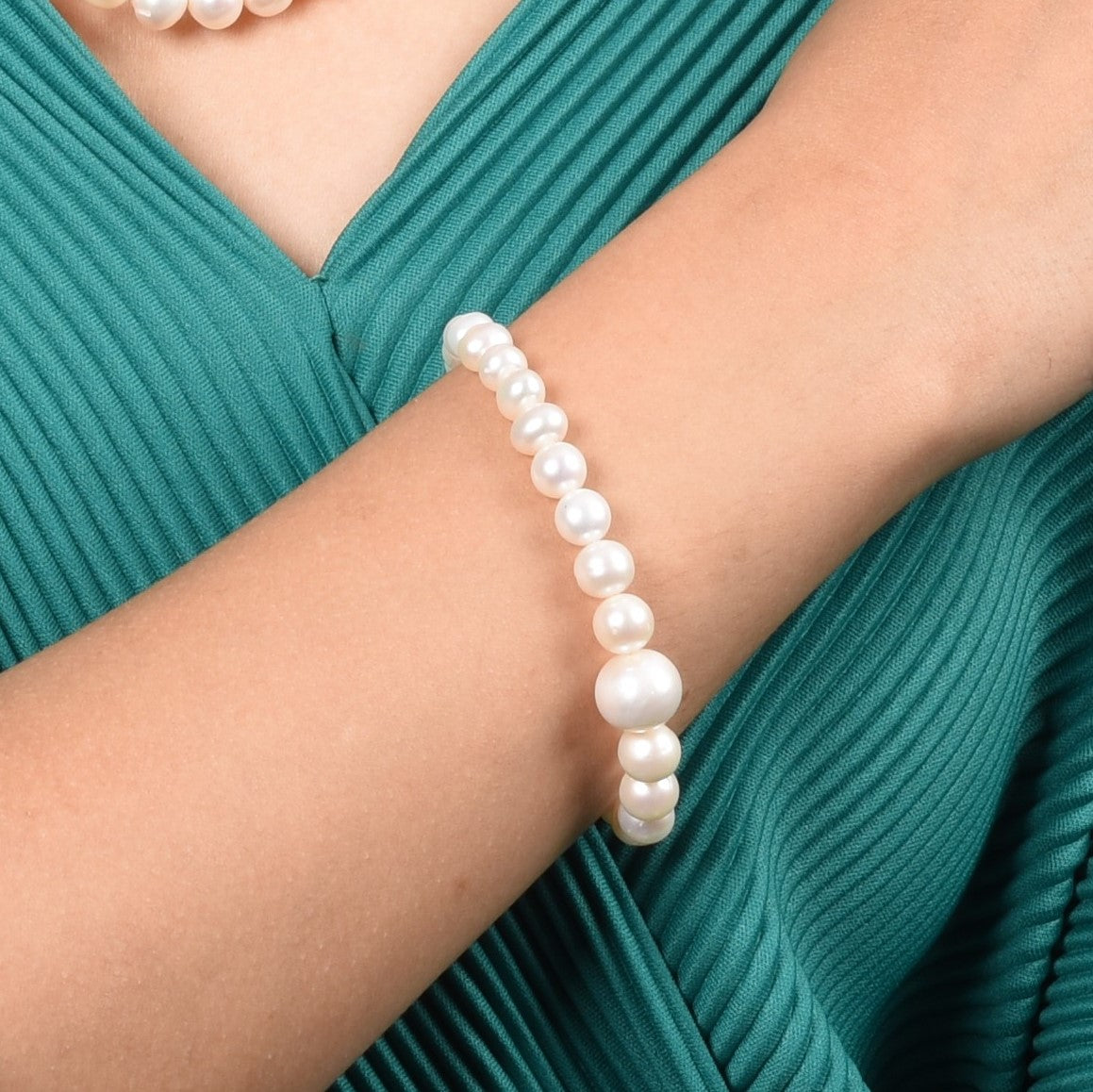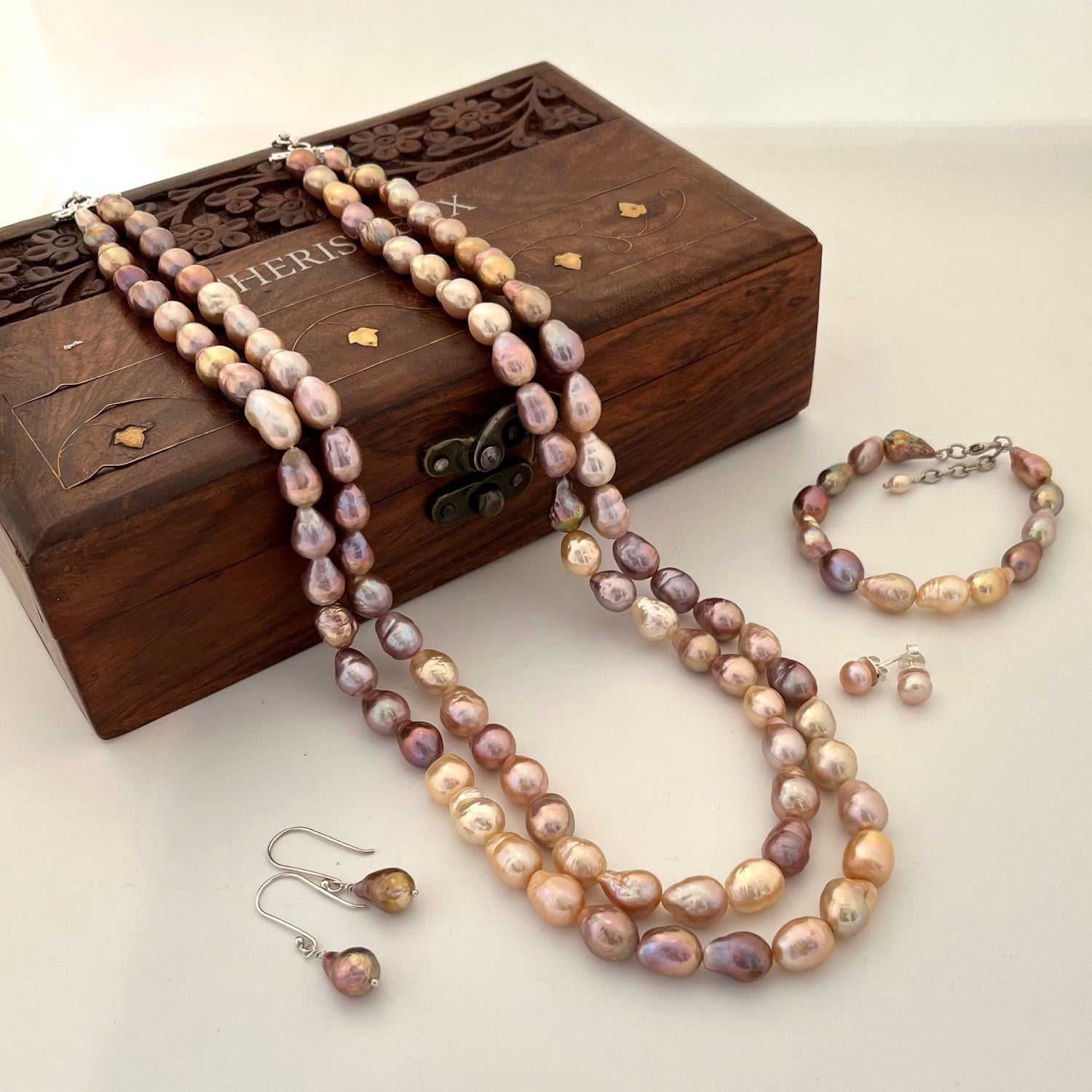When evaluating the quality and value of pearls, no standard grading system exists, unlike in the diamond industry. Professionals in the pearl industry commonly use a grading system to assess pearls.
While the grading criteria may vary, ten key factors are typically considered. This article will delve into each factor and provide insights into understanding pearl quality and value classification.
Pearls are Graded Based on the Following Factors
1. Size of the Pearls
Pearls are measured in millimeters, and larger pearls are generally more valuable than their standard-sized counterparts.
This is primarily due to the rarity of the smallest and largest pearls, making them harder to obtain and in higher demand. Consequently, their pricing tends to be higher as well.
2. Shape of the Pearls
Round pearls are considered the most precious, but slightly off-round, oval, teardrop-shaped pearls can hold value, particularly if they possess a perfect shape. Irregular shapes are often deemed less desirable.
Baroque pearls, known for their unique bodies, have recently gained popularity and increased in price due to their growing demand.
3. Color of the Pearls
Pearls exhibit a range of colors, including white, cream, pink, gold, and black. The natural color of a pearl depends on its type, and the most valuable pearls typically possess a natural and uniform color.
The consistency and richness of color play a significant role in determining a pearl's quality and value.
4. Luster of the Pearls
Luster refers to a pearl's ability to reflect light. High-quality pearls have a bright, reflective shine that adds to their allure. Overtones, which are secondary colors reflecting on the pearl's surface, contribute to the pearl's luster and overall value.
A pearl's overtones create its stunning luster and shine, making it prismatic and valuable.
5. Surface quality of the Pearls
The surface of a pearl should be free from blemishes, cracks, and other imperfections—pearls with fewer flaws and a smoother surface command higher value in the market.
A flawless surface enhances the pearl's aesthetic appeal and contributes to its overall quality.
6. Nacre thickness of the Pearls
The thickness of the nacre, the layer covering the pearl, is crucial in determining its quality. Pearls with thicker nacre are generally more durable and exhibit a more beautiful luster.
A thick nacre layer ensures the longevity and resilience of the pearl, making it highly valued.
7. Pearl Matching of the Pearls
When evaluating a strand of pearls, the concept of pearl matching becomes significant. Since each pearl is unique, some variations are expected between pearls within a strand.
However, when considering pearl matching, factors such as size, shape, color, and luster should be consistent across the pearls. Pearls are often graded from A to AAA, with AAA representing the highest quality pearls with high gloss, no visible blemishes, and a round shape.
The AA grade denotes slightly lower-quality pearls with minor imperfections or off-round conditions. In contrast, the A grade represents inferior pearls with visible blemishes, lower luster, and non-round shapes.
8. Pearl Type of the Pearls
Different pearls, such as Akoya, South Sea, Tahitian, or Freshwater, exhibit distinct characteristics and value factors. Each type has its grading standards based on specific qualities and attributes.
Understanding the characteristics of different pearl types is essential in accurately assessing their quality and value.
9. Uniformity of the Pearls
The overall uniformity of a pearl strand significantly affects its value. Pearls that demonstrate consistency in size, shape, color, and luster throughout the strand are considered more valuable than those with noticeable variations.
Uniformity ensures visual harmony and coherence, making the pearl strand highly sought after.
10. Treatment of the Pearls
Pearls can undergo various treatments to enhance their appearance or improve their durability. Treated pearls may have a lower value than natural or untreated pearls, depending on the extent and type of treatment applied. When evaluating its authenticity and weight, it is essential to consider whether a pearl has undergone treatment.
Conclusion:
While there is no universally standardized grading system for pearls, professionals in the industry rely on several key factors to evaluate the quality and value of pearls. Factors such as size, shape, color, luster, surface quality, nacre thickness, pearl matching, type, uniformity, and treatment play significant roles in determining a pearl's classification. By understanding these factors, consumers can make informed decisions when purchasing pearls and appreciate each pearl's unique beauty and value.\
Few Frequently Asked Question (F&Qs)
How Does Cherishbox Use the Grading System to Define the Quality and Value of Pearls?
Cherish Box offers AAA & AAA+ graded pearls. AAA+ pearls are a 95% blemish-free surface with a sharp mirror-like structure. AAA is a 90% blemish-free surface with medium to intense luster. The more blemish-free, the most expensive and authentic.
Do Pearls with Higher Grades Generally Have Better Durability and Longevity?
Pearls with higher grades generally possess better durability and longevity. Their higher-quality nacre and surface integrity contribute to their ability to withstand wear and maintain their luster over time.
What Are Some Key Indicators That Help Determine the Authenticity and Quality of a Pearl?
Critical indicators of pearl authenticity and quality include luster, surface quality, color, and origin.












